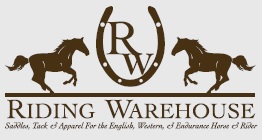In an unprecedented protest last Saturday night, jockeys at the Penn National racetrack refused to ride in any race where New Hampshire owner Michael Gill had a horse entered. They declared it is a safety issue -- Gill's horses are breaking down at a high rate and endangering other horses and riders.
The stats
Ten of Gill's horses broke down and were euthanized on the track in 13 months — two last week alone (LA Times article). On January 23, Gill's Laughing Moon broke down after the finish line, causing a jockey and horse to fall behind them (read article about Laughing Moon's breakdown). That event apparently prompted the ban.
The talk
There are many accounts of this jockey ban (see Resources below), but this recent L.A Times article indicates there will be a probe into the deaths and breakdown record of this owner. There are many, many blog articles and threads on COTH and other forums on this topic too, and the buzz is, this has been a long time coming. I've excerpted an article below that reports not only on the breakdowns, but also reports that Gill's ex- racehorses are routinely sent to slaughter. The Paulick Report shares some of Gill's comments on the controversy.
Racing and slaughter controversy consumes Penn National Race Course
On Saturday night, during the fifth race at Penn National Race Course, Michael Gill's third place finisher, Laughing Moon collapsed and was euthanized in front of a crowd of onlookers. It is no mystery that horses are known to break down on the tracks as they race, but Gill's reputation has jockeys, owners, trainers and outside observers accusing Gill of an unusually high rate of horse injuries and deaths.
Just before the sixth race, about 25 jockeys gathered together to take a stand and refused to ride in the next race unless a Michael Gill horse was scratched. Jockeys feared for their own safety, and this seemed to be an unprecedented decision when jockeys refuse to ride because of an owner. Jockey Emilio Flores claims he had too many close calls and even took a spill riding another one of Gill's horses that fell during the past week.
RESOURCES
Jockeys focus on owner Michael Gill from Thoroughbred Times
Jockeys speak out against thoroughbred breakdowns from The Horse magazine
Horse World Wonders Why It Took Jockeys, And Not Penn Gaming Officials, To End The Rampant Break-Downs Of Mike Gill's Thoroughbreds from Delawareway.blogspot.com
PA jockeys won't race against N.H. owner from Boston Globe
PA commission to investigate Gill from Thoroughbred Times
Michael Gill raises controversy over breakdowns from Equine Reader
Penn wants commission to investigate Gill from Bloodhorse.com
Gill threatens to sue Paulick Report from Paulic Report
Penn jockeys revolt against Michael Gill from Canadian Gambling News
Is anybody watching this? From GallopFrance blog
























